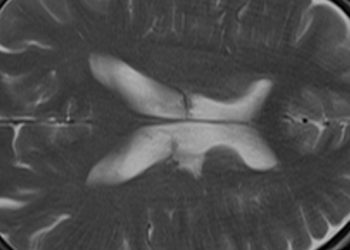2 Minute Medicine Rewind May 22, 2023
1. Patients with diabetic foot ulcers randomized to receive an application of topical esmolol hydrochloride in addition to standard care were observed to have an improved rate of wound closure at 12 weeks.
Evidence Rating Level: 1 (Excellent)
Diabetic foot ulcers (DFUs), a prevalent complication of diabetes, affect 15 – 25% of patients with diabetes in their lifetime and are associated with a high 5-year mortality rate of 46%. Despite optimal therapy, DFUs have poor healing potential and often recur. Esmolol hydrochloride is a gel formulation of a small-molecule drug that seeks to stimulate intrinsic wound-healing mechanisms when applied topically, but has yet to have significant clinical testing. This phase 3 randomized clinical trial aims to evaluate the safety and efficacy of topical esmolol gel for DFU wound closure. 176 patients (122 men [69.3%]; 54 women [30.7%]; mean [SD] age, 56.4 [9.0] years) with full-thickness, uninfected DFUs were recruited from 27 tertiary care centers across India from December 2018 to August 2020. Patients were randomized in a 3:3:1 ratio into three groups – esmolol, 14%, gel plus standard of care (SoC), SoC only, and vehicle plus SoC. Participants and investigators were blinded to this randomization. 18.6% (OR, 2.13; 95% CI, 1.08-4.17; P = .03) more participants achieved the primary endpoint of DFU closure within 12 weeks in the esmolol with SoC group than in the SoC only group. Regardless of the size or location of the ulcer, the esmolol with SoC group performed better and demonstrated significantly higher rates of closure in subgroups characterized by risk factors for poor wound healing such as body weight >80 kg and BMI >25. Findings suggest that topical esmolol may represent a promising new adjunctive therapy for the treatment of DFUs.
1. For patients aged 70 years and older with esophageal squamous cell carcinoma (ESCC), the combination of simultaneous integrated boost radiation therapy (SIB-RT) technique with concurrent and consolidated oral S-1 chemotherapy resulted in improved overall survival (OS) and progression-free survival (PFS).
Evidence Rating Level: 1 (Excellent)
Patients aged 70 years and above constitute a significant proportion (30% to 40%) of individuals diagnosed with ESCC worldwide. The conventional treatment for inoperable ESCC involves concurrent double-agent IV chemotherapy and radiotherapy, which is not tolerated well in patients with advanced age and comorbidities. Advanced radiation techniques, namely SIB-RT, have shown several advantages over traditional techniques including shortened overall treatment course. S-1, an orally administered chemotherapeutic drug, has also shown promising effectiveness and safety in patients with digestive system tumors. Hence, this phase II randomized clinical trial aimed to evaluate the efficacy and toxicity of SIB-RT with concurrent S-1 chemotherapy to treat inoperable ESCC in patients aged 70 years and older. 330 eligible patients (median [IQR] age, 75.5 [72-79] years; 220 [66.7%] male patients) were recruited from 10 centers in China between March 2017 and April 2020. Patients were randomized 1:1 to receive S-1–based definitive SIB-RT followed by consolidated chemotherapy (CRTCT group) or SIB-RT alone (RT group). OS was improved in the CRTCT group compared with the RT group at 1 year (72.2% vs 62.3%), 2 years (55.7% vs 43.8%), and 3 years (46.2% vs 33.9%; log-rank P = .02). Similarly the CRTC group demonstrated improved PFS compared with the RT group at 1 year (60.8% vs 49.3%), 2 years (45.4% vs. 37.0%) and 3 years (37.3% vs 27.9%; log-rank P = .04). Overall, compared with SIB-RT alone, SIB-RT with oral S-1 chemotherapy demonstrated improved survival outcomes without additional treatment-related toxic side-effects for patients aged 70 years and older with inoperable ESCC and should therefore be considered as a definitive treatment option.
1. Spironolactone showed more effective improvement in acne at 12 and 24 weeks after treatment initiation as compared with the placebo.
Evidence Rating Level:1 (Excellent)
Acne is highly prevalent in adolescents and can persist into adulthood. The first-line management of mild to moderate acne typically involves a combination of topical preparations containing retinoids, benzoyl peroxide, or antibiotics. One-third of patients seeking treatment for acne receive long oral antibiotic rouses (>28 days), which presents a concern for developing antibiotic resistance. Spironolactone, a potassium-sparing diuretic, may be a much-needed alternative to oral antibiotics given its anti-androgenic properties. The Spironolactone for Adult Female Acne (SAFA) trial aimed to assess whether spironolactone improves acne in women compared with placebo. From 10 centers in England and Wales, 407 eligible women – aged 18 years or over with facial acne for at least six months that warranted treatment with oral antibiotics – were randomly assigned in a 1:1 ratio to receive either 50 mg spironolactone (201 patients) or matched placebo (209 patients) once daily for the first six weeks and then two tablets daily at 6 weeks for a total of 24 weeks. Patients, staff, and investigators were masked to treatment allocations. The primary outcome measure was the 12-week mean Acne-QoL symptom subscale score, with higher scores reflecting improved quality of life. After adjusting for baseline variables, there was a small but statistically significant difference of 1.27 (95% CI 0.07 to 2.46) in the mean Acne-QoL symptom subscale score favoring the spironolactone group at 12 weeks. At 24 weeks, there was a larger mean difference of 3.45 (2.16 to 4.75), representing a statistically significant greater improvement in the spironolactone group. Furthermore, both clinicians and participants were more likely to report overall acne improvement from baseline than those in the placebo group. However, the spironolactone group experienced a higher incidence of adverse reactions, with headaches and dizziness mainly accounting for this difference. Overall, women reported significant improvements in acne when taking spironolactone as compared to placebo. These findings suggest that spironolactone may be a safe and effective alternative to oral antibiotics for adult women with persistent acne.
1. In patients with CKD, non-alcoholic fatty liver disease (NAFLD) is associated with an increased risk of cardiovascular events (CVE), while the NAFLD fibrosis score was independently associated with higher all-cause mortality (ACM) and CVE risk
Evidence Rating Level: 1 (Evidence)
Affecting a quarter of adults, NAFLD is characterized by the accumulation of excess fat in the liver and serves as an independent risk factor for cardiovascular disease and mortality. Likewise, chronic kidney disease (CKD) is associated with diminished quality of life, an elevated risk of end-stage renal disease (ESRD), cardiovascular disease, and premature mortality. The implications of having both CKD and NAFLD are poorly understood, therefore this large prospective cohort study was performed to assess the independent associations of NAFLD and NAFLD with advanced liver fibrosis with the risks of CVE, ESRD, and ACM in individuals with CKD. After excluding individuals who had a baseline CVE, already developed ESRD, or had a non-NAFLD cause of liver disease, 18,073 participants with CKD were identified from the UK Biobank (UKBB), a prospective cohort study aimed at improving disease prevention. In this cohort 56.2% (n = 10,152) of people had NAFLD. Univariate analysis demonstrated that NAFLD was associated with a higher incidence of all CVE (HR 1.49 [1.38–1.60], p < 0.0001), ACM (HR 1.22 [1.14–1.31], p < 0.0001), and ESRD (HR 1.26 [1.02–1.54], p = 0.0298). After multivariable adjustment for age, sex, ethnicity, deprivation, alcohol, smoking, baseline renal function, and diabetes, NAFLD only remained an independent risk factor for CVE overall. When examining the effects of liver fibrosis in a multivariable analysis, an NAFLD fibrosis score (NFS) ≥ 0.676 was associated with an increased risk of all CVE (HR 1.19 [1.01–1.40], p = 0.0424) particularly HF (HR 1.65 [1.36–2.01], p < 0.0001), and ACM (HR 1.31 [1.13–1.52], p = 0.0005). Overall, NAFLD is significantly associated with CVE and not ACM or ESRD as demonstrated by the multivariate analysis. In the setting of advanced fibrosis, NFS was independently related to ACM and CVE, in particular, heart failure. These findings underscore the significant correlation between the kidneys and the liver and warrant further investigation into the mechanism of this association.
1. Anatomic alteration of the carpal tunnel in conservatively managed distal radius fractures (DRF), particularly diminished radio capitate distance (RCD), volar prominence height (VPH), and volar tilt (VT), is significantly associated with delayed carpal tunnel syndrome (DCTS) development.
Evidence Rating Level: 3 (Average)
Carpal tunnel syndrome (CTS) is a common complication following DRF. CTS development after DRF may present acutely (at the time of injury) or in a delayed fashion (after several weeks). DCTS, which has an incidence of 0.5 – 22%, is thought to occur due to anatomical changes in the carpal tunnel after fracture healing. This retrospective case-control study aimed to explore the association between changes in carpal alignment and the severity of median nerve entrapment in patients who underwent conservative management for their DRFs. The study included 60 female patients with a history of DRF in the last 6 months, half with symptoms congruent with DCTS — the symptomatic group — and the other half representing the control group. Both groups were comparable with regards to age and body mass index. Quantitative analysis of radiographic parameters, including the RCD, VPH, and VT, and electrophysiological evaluation of the median nerve was performed. The average time from injury to the onset of DCTS was 3 months, ranging from 7 weeks to 6 months. In the symptomatic group, approximately 46% had mild CTS, 23% had moderate CTS, and one patient had severe CTS. In comparison, the control group only had two patients with minimal abnormalities in electrophysiology of the median nerve (minimal CTS). RCD, VPH, and VT in the symptomatic group were − 11.48 mm, 2.24 mm, and − 20.68° angle, respectively. These radiograph parameters of carpal tunnel anatomy were significantly lower in the symptomatic group as compared with the controls. Overall, the study findings suggest that the risk and severity of DCTS are associated with poor distal radius alignment according to the radiologic features of RCD, VPH, and VT. Understanding these risk factors for the development of DCTS can inform surgeons regarding the optimal management of DRF. Despite highly significant results, this study is limited by the small sample size and inclusion of exclusively female patients over the age of 60, therefore future studies should amend these issues.
Image: PD
©2023 2 Minute Medicine, Inc. All rights reserved. No works may be reproduced without expressed written consent from 2 Minute Medicine, Inc. Inquire about licensing here. No article should be construed as medical advice and is not intended as such by the authors or by 2 Minute Medicine, Inc.







